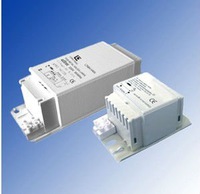The High Intensity Discharge (HID) light source. References to passing an electric arc through mercury gas to provide light goes back to the mid-19th century,but around the turn of the century Peter Cooper Hewitt developed mercury filled tubes and in 1902 the Cooper Hewitt Vapor Lamp Company was established to make and market these lamps. Ultimately, these proved to be too cumbersome with heavy ballasts and as much as a pound of mercury. In 1919, GE purchased the Cooper Hewitt Vapor Lamp Co. In 1933, GE began marketing a new mercury lamp followed by the High Pressure Sodium lamp in 1961, the Quartz Metal Halide lamp in 1962 and the Ceramic Metal Halide lamp in the mid-1990s.
High Intensity Discharge (HID) lighting replaces the filament of a light bulb with a capsule of gas. The light emanates from an arc discharge between two closely spaced electrodes. This discharge is hermetically sealed inside a small quartz glass tubular capsule. HID lights require a ballast, which carefully regulates the voltage supplied to the capsule of gas. The amount of light produced is greater than a standard halogen bulb while consuming less power; this light more closely approximates the color temperature of natural daylight.

In all High Intensity Discharge lamps, light is produced by passing a current through a metal vapor. Free electrons colliding with an atom in the vapor momentarily knock an electron into a higher orbit of the atom. When the displaced electron falls back to its former level, a quantum of radiation is emitted. The wavelength of radiation depends on the energy zone of the disturbed electron and on the type of metal vapor used in the arc tube.
HID bulbs produce 5 percent of their output when first ignited, requiring a few seconds (usually 15-20) to reach full output. Also, if power to the lamp is lost or turned off, the arc tube must cool before the arc can be re-struck and light produced. Halcyon HID lights require approximately 5-10 seconds before they can be re-lit.
There is no current flow through the lamp until the lamp starts. When the lamp starts initially, there is a higher current draw because the voltage in the arc tube is low at first; the current draw increases until the lamp reaches its operating voltage range. This information about (line input) open circuit can be found in the metal halide ballast.
Metal Halide Ballasts | High Pressure Sodium Ballasts | Fluorescent ballasts | Gear Tray
Links: Porcelain lamp socket | Mercury Vapor Ballast | Light bulb socket
Xml Copyright: @2012-2020 James Lighting Electronic Co.,Ltd